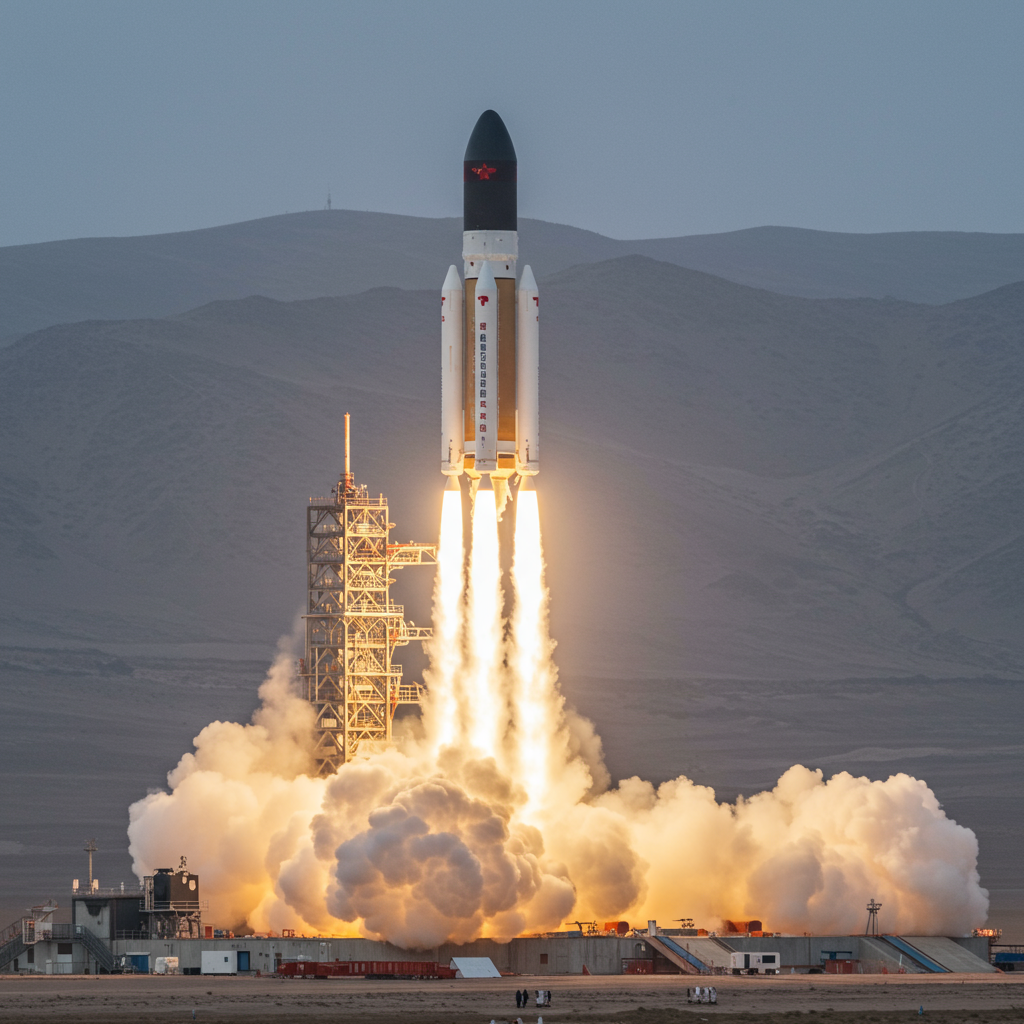China has successfully completed a crucial safety test for its next-generation crew spacecraft, the Mengzhou (“dream vessel”), marking a significant step forward in its ambitious plans to land astronauts on the moon by 2030.
The zero-altitude, or pad abort, test took place early Tuesday, June 17 (Beijing time) at the Jiuquan Satellite Launch Center in the Gobi Desert. The test was designed to simulate an emergency situation on the launch pad and verify the spacecraft’s ability to rapidly and safely pull astronauts away from a failing rocket.
A Swift and Successful Escape
China’s human spaceflight agency, CMSEO, reported that at 12:30 p.m. Beijing time (0430 UTC; 12:30 a.m. Eastern Time), an ignition command triggered the Mengzhou spacecraft’s launch escape system. Powerful solid propellant engines rapidly boosted the crew module away from the ground.
Footage confirmed the rapid acceleration. Within approximately 20 seconds, the vehicle reached a predetermined altitude. The return capsule then successfully separated from the escape tower, its parachutes deployed, and it landed safely in the designated test zone at 12:32 p.m., cushioned by an airbag system. CMSEO declared the test a complete success, confirming the emergency systems performed as expected.
Mengzhou: China’s Future Crew Vehicle
The Mengzhou spacecraft is central to China’s future in space. Designed with a modular approach, it will serve dual roles:
Low Earth Orbit (LEO) Variant: Partially reusable, capable of carrying up to seven astronauts or a combination of fewer astronauts and 500 kilograms of cargo to the Tiangong space station.
Lunar Variant: A larger version weighing up to 26,000 kilograms, designed to carry three astronauts to lunar orbit to dock with a separately launched lunar lander, crucial for the moon landing program.
A boilerplate version of the spacecraft was previously tested in 2020 on a Long March 5B rocket flight, demonstrating high-speed reentry capabilities. CMSEO envisions Mengzhou becoming the core vehicle for both ongoing space station operations and future lunar exploration.
Evolving Safety Systems
The Mengzhou represents an evolution in spacecraft safety design compared to China’s previous Shenzhou vehicle. While Shenzhou’s approach relied on the rocket handling abort control and the spacecraft focusing solely on crew rescue, the Mengzhou spacecraft takes full responsibility for both abort control and ensuring crew safety independently. This test was China’s first pad abort test for a crew spacecraft since a similar test for Shenzhou in 1998.
Global Focus on Astronaut Safety
Safeguarding astronauts during the inherently risky launch phase is a paramount concern for all nations pursuing human spaceflight. Crew escape systems, often tested via pad aborts, are vital safety nets. NASA, for instance, conducted a pad abort test for its Orion crew vehicle in 2010.
Other spacefaring nations are also rigorously testing their safety systems. India, for its ambitious Gaganyaan human spaceflight program aiming for LEO, has likewise prioritized the Crew Escape System (CES). India previously conducted a pad abort test in 2018 and plans further high-altitude abort tests. These tests, across different programs, underscore the universal importance placed on astronaut safety, incorporating lessons learned from historical events, such as the tragic Apollo 1 fire in 1967, which underscored the critical need for robust emergency escape capabilities. China’s successful Mengzhou test aligns with this global commitment to developing advanced systems to protect human lives in space.
Looking Ahead to the Moon
The success of the Mengzhou pad abort test is hailed by CMSEO as laying “an important technical foundation for future crewed lunar missions.” Development of other key components for China’s lunar program is also advancing steadily, including the powerful Long March 10 launch vehicle and the lunar lander.
The Long March 10, based on Long March 5 technology, will feature three large 5.0-meter-diameter core stages powered by YF-100K engines. Facilities for the Long March 10 are currently under construction at the coastal Wenchang spaceport on Hainan island, the anticipated launch site for future crewed lunar missions.
China plans a more complex in-flight escape test at maximum dynamic pressure later this year, although specific timing and location remain unannounced. This continued testing demonstrates China’s deliberate approach to developing the complex systems needed to achieve its goal of putting astronauts on the moon by the end of the decade.




